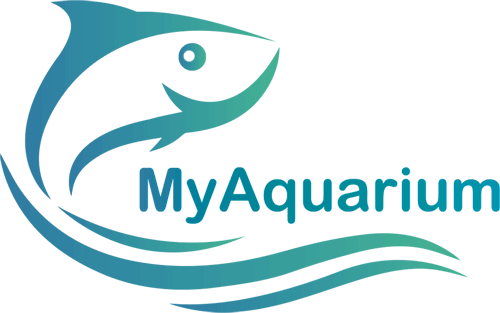The African Moon Tetra (Bathyaethiops caudomaculatus) is a little-known but easy-to-care fish that can grow to a considerable size. The species, ideal for community tanks and very peaceful, usually lives well when kept in groups in large spaces.
In the wild, the African Moon Tetra can be found in the Sangha River in the Democratic Republic of Congo, as well as in Pool Malebo and the Lomami River, an important affluent of the Congo River. The species is also seen in some Cameroon areas , where they inhabit slow moving waters covered by dense vegetation.
These fish have large bodies and are golden-yellow color. In addition, they have a large black spot at the base of the caudal fin and a small red spot under the dorsal fin.
Continue reading to learn about the main features of African Moon Tetra.
Technical Details
Name: African Moon Tetra, African Moonfish, African Moon Characin;
Scientific Name: Bathyaethiops caudomaculatus (Pellegrin, 1925);
Family: Alestidae;
Species Origin: Sangha River Drainage in the Democratic Republic of Congo and Cameroon;
Length: Up to 3,14 inches;
Life Span: 3-5 years;
Care Level: Easy / Moderate;
Water Parameters
pH: Maintain the pH of the water between 6.3 – 7.3;
Water Hardness: Between 5 – 12;
Temperature: Must be kept between 23 – 27°C;
Care
Food
Omnivorous. The African Moon Tetra will accept a wide food variety, but it’s best to feed them high quality dry food such as pellets or flakes.
You can supplement the diet of this fish by adding live and frozen foods such as bloodworms, daphnia, as well as small invertebrates and larvae.
Temperament / Behavior
The African Moon Tetra is known to be a peaceful and gregarious fish. Therefore, you should keep a minimum of 6 individuals together to make them feel more comfortable and secure.
In addition, the species prefers to swim in the upper region of the tank.
Tank Mates
Simply because the African Moon Tetra is a peaceful fish, you can place it with many other species. However, they must have the same maintenance requirements.
Just avoid placing them with larger and more agitated species, as well as fish that love to nibble on fins.
You can add them with many other characids.
Breeding / Mating
Distinguishing the male from the female is quite easy for this species. Females tend to be fuller in the abdomen area and plumper towards the tail. Also, the red spot under the dorsal fin is slightly smaller than that of males.
Unfortunately, there’s not much information about the reproduction of these fish in captivity, however, i can imagine that they reproduce in a similar way to other species of African tetras.
It’s known that these fish prefer to spawn in groups and in places with dense vegetation. So, you can provide a group of 6 fish (3 males and 3 females) and condition them in an tank with a bottom full of Java Moss. They will spawn amidst the moss leaves.
When spawning is complete, remove the parents to prevent the eggs from being eaten. Finally, when the fry are swimming around the tank, you can feed them infusoria.
Fish Tank Size
The fish tank needs to have at least 20 gallons for a group of 6 specimens.
Also, the fish tank should be well planted, but with open areas in front so they can swim freely.
References
Paugy, D., 1984. Characidae. p. 140-183. In J. Daget, J.-P. Gosse and D.F.E. Thys van den Audenaerde (eds.) Check-list of the freshwater fishes of Africa (CLOFFA). ORSTOM, Paris and MRAC, Tervuren. Vol. 1. (Ref. 5331)




